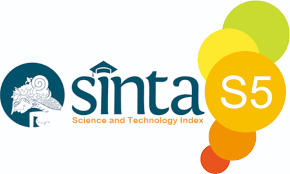WRITING PATTERNS DEVELOPMENT WITH FOLKLORE IN MODERN FANTASY LITERATURE
DOI:
https://doi.org/10.22460/jler.v5i2.10099Keywords:
Comparative Literature, Intertextual, Folklore, Fantasy, Webtoon, Web NovelAbstract
This research was conducted on the curiosity of researchers related to the difficulty of finding studies and discussions of fantasy literature subject. That's why researchers tried to start research to prove fantasy literature could be created from developing local myth, especially, studies related to it are rarely found. The method chosen here is a qualitative descriptive comparative literary approach using intertextual theory by comparing webtoon 7 Wonders that developed its setting on the basis of Nawang Wulan figure from folklor "The Legend of Jaka Tarub" with popular culture concepts such as "Lucifer the Fallen Angel" and "Nyi Roro Kidul". From the development was created a characterization setting. On the other hand, Omnicient Readers developed his work with the dokkaebi and Bihyeong figure of "Lady Dohwa and Banchelor Bihyeong" against the concept of post-apocalypse world, gods, and stream channel or network as target of creating a new world setting in the story. From the conclusions obtained in the result of two works, it can be known that myth such as folklore proved can be made as a reference to fantasy literature.
References
Sumitro, Warkum., Anas Kholish, Moh., & Musshoffa, In'amul. (2014). Konfigurasi Fiqih Poligami Kontemporer: Kritik terhadap Paham Ortodoksi Perkawinan Poligini Indonesia. Malang: UB Press.
Nurgiyanto, Burhan. (2018). Teori Pengkajian Fiksi. Yogyakarta: Gadjah Mada University Press
Myung-sub, Chung. (Eds). (2013). Encyclopedia of Korean Folk Beliefs: Encyclopedia of Korean Folklore and Traditional Culture (Vol. II). Seoul: The National Folk Museum of Korea.
Myung-sub, Chung. (Eds). (2014). Encyclopedia of Korean Folk Literature: Encyclopedia of Korean Folklore and Traditional Culture (Vol. III). Seoul: The National Folk Museum of Korea.
Immerry, Tienn., & Dahlan, Femmy. (2020). Man and Nature in Three Folklores. Jurnal Kata, 1, 10-27. doi: 10.22216/kata.v1.5065
Wahyuningtyas, Krisna., & Pramudiyanto, Ahmad. (2021). Perbandingan motif cerita Jaka Tarub dan Nawang Wulan dengan cerita Niúláng Zhinü. Jurnal Diwangkara, 1(1), 16-25.
Damayanti, Ema. (2020). The relationship of intertekstual emancipation of wowen in the "Dyah Pitaloka" Novel and Book of "Habis Gelap Terbitlah Terang". JLER: Journal Language Education Research, 3(2), 12-23.
Shaijan, Annliya. (2019). Goblin Mythology: A Brief Study of the Archetype, Tracing the Explications in English Literature. Global Journal Human-Social Science, 19(4), 7-9.
Omnicient Reader. (n.d.). Webnovel. Retrieved from https://www.webnovel.com/book/omniscient-reader_12524375106746605
Wonders. (n.d.). Webtoon. Retrieved from https://www.webtoons.com/id/fantasy/7-wonders/list?title_no=699
Lady Dohwa and Bachelor Bihyeong(桃花女鼻è†éƒž). (n.d.). In Encyclopedia of Korean Folk Culture. Retrieved from https://folkency.nfm.go.kr/en/topic/detail/5786






